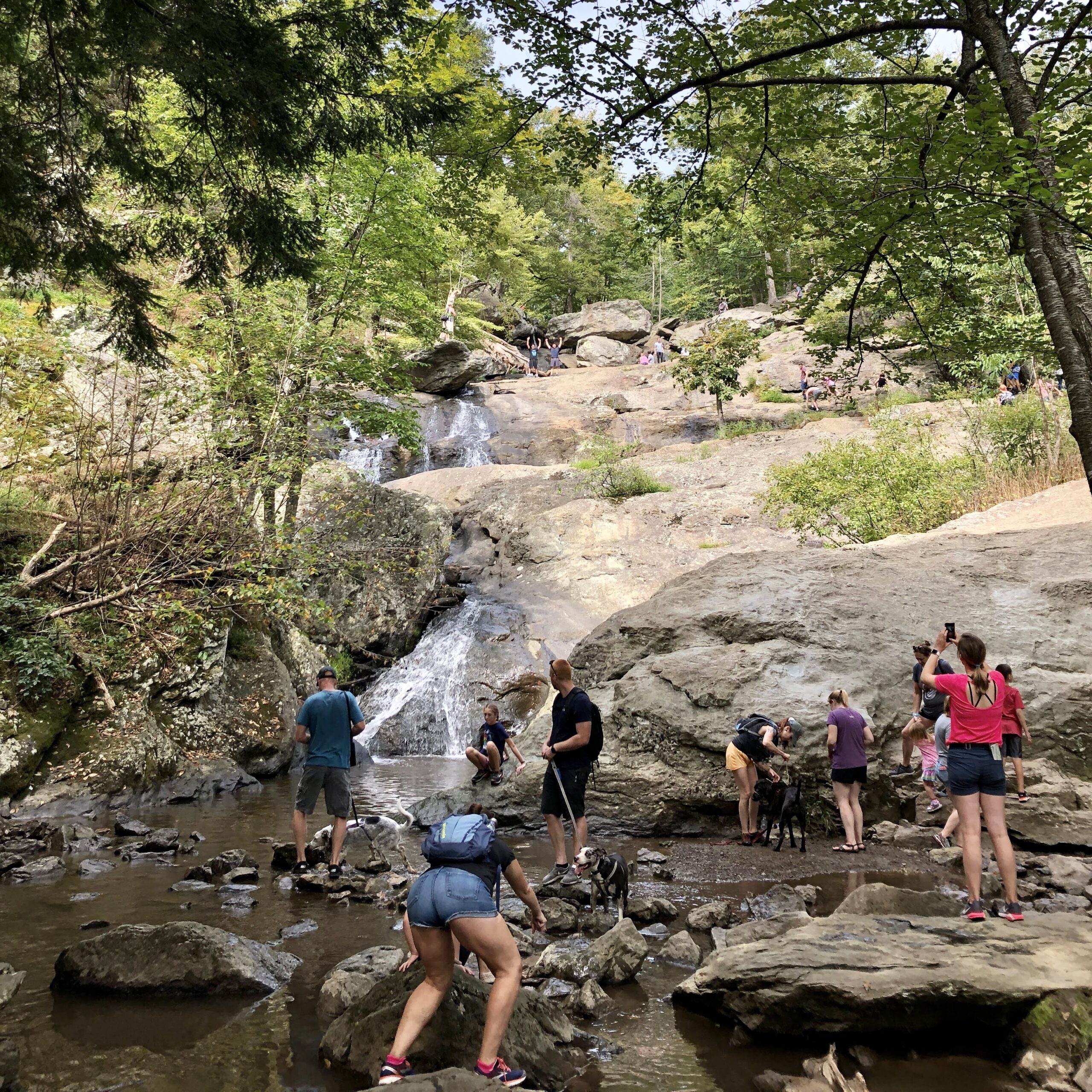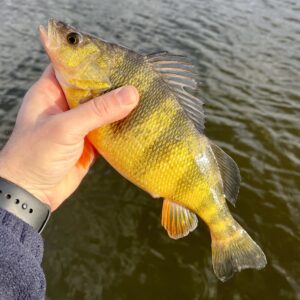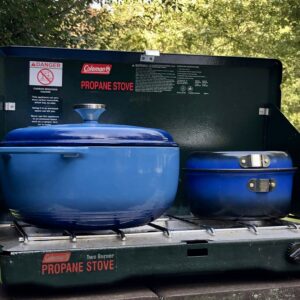North to south and along a mid-Piedmont range of valleys, mountainous outcroppings, waterfalls, and attractions runs a three-park conglomerate that offers camping, hiking, swimming, rock climbing, fishing, and views for miles. This valley adventure begins just a few short miles northwest of the ever-growing town of Frederick, Maryland. Within range of every city-amenity one could wish for, plus culture to boot, are several parks adjacently sprawled among the deciduous wilderness. Gambrill State Park serves as the introduction, followed by the attractive Cunningham Falls State Park, which transitions into the national preserve, Catoctin Mountain Park.
The history of this stretch of land is remarkable in that it was given life as these three parks during the Great Depression of the 1930s. President Franklin D. Roosevelt created The Works Progress Administration and the Civilian Conservation Corps (CCC) programs, which ran until 1942, to give Americans opportunities to rebuild their lives, take pride in their national and natural resources, and create areas of recreation to be enjoyed for generations. And within Catoctin is Camp David, the somewhat-secretive presidential retreat that U.S. dignitaries have enjoyed respite within since its building during the CCC-era.

Today, at Gambrill State Park’s High Knob Area, there remain several large native-stone overlooks built by the CCC, as well as a monument honoring this work, which altogether is a park highlight punctuated by spectacular views of the western countryside and small towns that dot the landscape (bring binoculars—the lone church steeples in the distance are neat). This overlook area coupled with a small nature center is, perhaps, the most popular reason to visit Gambrill State Park—especially when spring’s green canopy blossoms or when fall’s foliage peaks in a vivid patchwork of cherry red, canary yellow, burnt orange, amber, and evergreen (this is true of all three parks by the way). But there’s much more to Gambrill…and this is where our family’s adventure began.
Set Up Camp
Camping was our calling card for a long-weekend and Gambrill State Park features a smaller, but slightly lesser-known, campground with 13 basic sites, nine tent-only site, six sites with electrical hookup, and four cabins. (Compare this to wildly-popular Cunningham Falls State Park’s 127 basic sites, 46 sites with electric, and eight cabins; and Catoctin’s 50 sites overall.) It’s easy to choose and book the site of your preference through the Maryland Department of Natural Resources’ reservation system online. Two pieces of advice for doing so. First, book early—as early as possible regardless of which park you ultimately choose. In the post-pandemic era, as outdoor recreation continues to soar in popularity, every park tends to fully-book many months in advance. Second—and this is a personal tip I like to offer—use the satellite/aerial views available via online mapping tools (e.g., Google Maps) to review the campground layouts and terrain. For this trip to Gambrill, we did exactly this and chose our desired camp site based on its proximity to both a wood-line and open space for our dog to enjoy running around. Fortunately, this basic tent site was available, and we made our reservation; a bargain too at less than $20 per night.
If you’re a novice tent camper, I suggest reviewing our ever-growing list of Camping Essentials, which includes must-have items, wish-list wants, and helpful tools that make for a more comfortable experience. It’s a list that I’ve compiled and adjusted over several trips taken in recent years with family camping in mind, and for a 3–5-day trip duration. (Our family ages at the time of this trip: 41, 40, 7, and 5).
When you read through Maryland DNR’s literature online about the camping experience at its state parks, you’ll come across a notice/warning to not bring your own firewood. The directive is to purchase firewood locally, and this is to avoid the transport of invasive species that can burrow into the wood, hitchhike across county and state lines, and devastate local habitat. The spotted lanternfly from China is the culprit we’re most worried about now. So, the question is: Where to purchase local firewood for the camping trip? After all, what’s camping without a campfire over which to cook food, roast marshmallows, and keep warm on chilly evenings? Good news. Each park has a healthy supply of split firewood for purchase; bundles of six or so splits go for $5 and the honor system is in place at the woodshed. Leave a few bills in the moneybox and take your wood. This allows easy access to the wood when needed. Of note, when grabbing your bundles, look for dry wood. Sometimes—and especially after a period of rain—the woodshed can become damp, which creates moldy bundles that become a challenge to burn.
Explore
Having arrived on site in mid-afternoon, setting up camp, and procuring enough firewood for our stay, we turned our attention to the great outdoors, sightseeing, blazing trails by day, and soaking in starry skies by night. By sunset on Day 1, we found ourselves at Gambrill’s “High Knob” overlook area mesmerized by the expansive vistas—a great way to get an idea of this region’s geography and the landscapes we’d be exploring during the next couple days. Returning to camp for supper and respite, we enjoyed our evening under the vast array of stars that the western Maryland skyscape—void of major metropolitan light pollution—offers. You’ll likely observe a few rogue meteors zipping into Earth’s atmosphere many miles above. A dreamy way to cap the nights and drift to sleep.

Our mornings at the campsite were spent cooking hearty breakfasts to fuel the day. French-press coffee is perfect for camping; boil your water and pour into the press with your grounds. It may sound fancy, but it’s, perhaps, the simplest setup for a delicious cup while “roughing it” in the wild. (And I’m convinced the best coffee experience on Earth is those first few sips on a chilly morn with the smoke of last night’s campfire wafting from the last glowing embers.) A propane stove is another meal-making must-have, for frying eggs-over-easy, corned beef hash (an easy and delicious canned food item), grits, and oatmeal.
Hiking is the day’s priority in these parks and there’s more trail mileage between the three parks than you’ll possibly be able to cover. So, the highlights are what first-timers are usually after. For our family, we chose moderate climbs and about five miles worth of trail each day—honestly, an exhaustive amount but with plenty of pit-stop vistas, geologic wonders, and nature bliss to keep us motivated.
Within footsteps of Gambrill’s campsites are trailheads that will lead northward, including the 27-mile behemoth Catoctin National Recreation Trail (blue blaze) that weaves through all three parks, terminating at Mt. Zion Road within three miles of the Appalachian National Scenic Trail. It serves as a sort of baseline trail from which to build your day trips, as there are many offshoot trails that loop through, around, and to the parks’ many attractions. About those attractions. Where to begin?
At Gambrill State Park, you’ll find yourself on moderate hikes reaching toward the aforementioned overlooks, nature center, and in between it all, deciduous valleys and rock outcroppings that begin to hint at what’s ahead. The Red Maple Trail, for example, was an excellent warm-up loop for our family to acclimate and prepare for more arduous hikes. It links to the Yellow Poplar Trail (and Catoctin for that matter), which extends and elevates to the High Knob Area. Basically, Gambrill—while an enjoyable and attractive park itself—sets the stage for the more adventurous two parks north.
For our day at Cunningham Falls State Park, we drove a couple miles into the William Houck Area to access the trailheads leading directly to the one of the park’s two most popular features—its namesake falls. This area also boasts the 43-acre, man-made Hunting Creek Lake, which offers summertime respite, swimming, and fishing. To access Cunningham Falls, which is Maryland’s largest cascading waterfall, you have a choice to make between two distinct trails leading from the parking area. Simply put, the high road or low. More specifically, the Cliff Trail or Lower Trail. Take a guess which is more difficult.
If time is of the essence, take the Lower Trail to reach the falls. We had all day to explore, so we chose the Cliff Trail. It delivered on its promise of steep inclines/declines, deep drop-offs, bouldering, huge igneous rock outcroppings, and the feeling that you’ve leveled up your hiking game. Admittedly, this trail was challenging for little legs, but the kids managed and there are great spots along the way to rest and take photos. At one point we came across a healthy group of rock climbers prowling a massive boulder that reached north of 30 feet. Pretty cool moment to watch and catch our breath while they exhausted theirs.
About an hour of hiking got us within earshot of the falls and soon enough, there they were—not quite the gushers you think of when “waterfall” comes to mind, but nonetheless impressive in stature. Water volume spilling over and down the falls is dependent on how much or little rainfall accumulates in the region. Spring season generally is wetter than fall.

You won’t be alone at the park’s main attraction. There’ll be plenty of company traipsing the area, but you’ll collectively feel pretty connected by the nature vibe. At the fall’s pool and outflow, I gathered the kids and overturned a few rocks to reveal the stream’s aquatic life hiding beneath—small crawdads, aquatic nymphs, and a dace or two. We sloshed through the cool water, people-watched along the adjacent boardwalk, and ate a few snacks before making the return trek to the lake area, where we took residence at a picnic table and fully winded down the day. The “lake effect” was profoundly relaxing and reminiscent of Adirondack summers.
As we exited the north end of Cunningham Falls State Park, cars, pickups, and SUVs lined the road that meandered through the hillside. We had come across the dividing line (Rocky Ridge Road), so to speak, between Cunningham and Catoctin Mountain Park, and the overflow parking for both. Dozens upon dozens of eager hikers were entering this northern most park of the trio, moving inward, onward, and up toward the highest range of outcroppings and scenic overlooks in Central Maryland.

Bluebird days of good weather beckon large crowds to experience Catoctin and the very popular hikes to Chimney Rock, Wolf Rock, Hog Rock, and a number of summit vistas. The trails offer moderate to strenuous tests of your endurance, but the views are certainly worth the effort. If you’re especially ambitious, you could follow the yellow blazed trail that runs directly from Cunningham Falls to Hog Rock in Catoctin and further along to the Blue Ridge Summit Vista. In fact, this long-distance, five-mile trail loops all the way back to the falls, so you can experience both parks in one day-hike.
For popular Chimney Rock located in the south end of Catoctin, starting at the Park’s headquarters and following the orange blazed trail for about 1 mile offers the quickest route to the 1,419-foot summit. Once there, you’ll experience panoramic views of undisturbed wildness. Wolf Rock is another half-mile hike northwest from Chimney, along the orange blazed trail. It rises 1,401 feet. Exploring the full extent of Catoctin’s trails, overlooks, and geological attractions takes at least two full days. The Visitor Center at the park’s main entrance is a good place to gather your wits and plan accordingly.
Given our family had only three days to explore this expansive trio of parks, we carefully picked our daily adventures and left many reasons to return on the table. If the great outdoors is calling your name, the contiguous stretch of Gambrill State Park, Cunningham Falls State Park, and Catoctin Mountain Park offers an abundance of Appalachian adventure within an hour drive of the Baltimore-Washington corridor.







